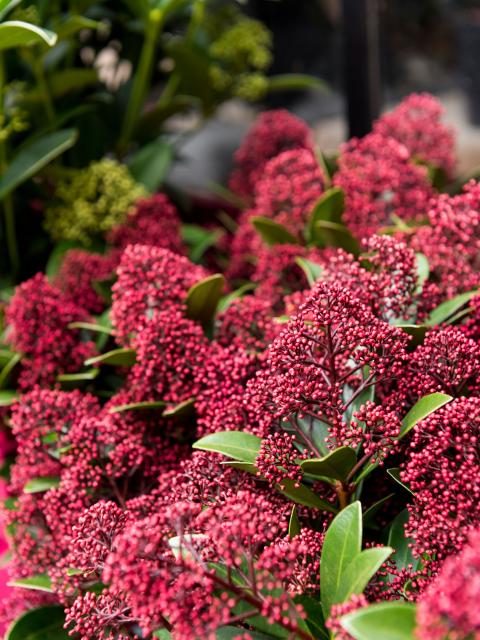Hazel is a plant that makes you instantly happy, thanks to its comical branches and twigs. It’s sometimes known as corkscrew hazel, or Harry Lauder’s walking stick (after the stick carried by the 1920s Scottish singer). The scientific name is Corylus avellana ‘Contorta’. But we’ll stick with hazel, known for its decorative use at Easter and as a botanical beauty in a vase. It looks equally lovely in the garden, as a container plant or in a bed. Hazel is a shrub that has disguised itself as a tree and can reach a height of up to four metres. The plant flowers in February and March with yellow festoons packed with flowers on the bare branches. After flowering you still have a decorative plant which then produces pale green leaves that are also a bit twisted and turn a warm yellow in autumn.
Twin production
Hazel is a member of the birch family and grows in western Europe and west Asia. Because the corkscrew hazel grows very slowly, growers graft (attach) it onto the trunk of an ordinary hazel. That grows more rapidly and helps the corkscrew hazel to grow smoothly. The Latin name Corylus is derived from the Greek word ‘korus’ which means ‘helmet’. This is a reference to the shell around the hazelnut. the second name ‘avellana’ is a reference to the trading centre of Avella east of Naples where there was a flourishing hazelnut trade as far back as Roman times.
Trivia
- In the Middle Ages hazel was one of the three holy trees that could not be cut down. The apple tree was spared for its beauty, the oak for its strength and the hazel for the wisdom that was attributed to it.
- There are regular references to hazel in Greek mythology and old folktales. It is a shrub that has been part of the landscape and the culture for centuries. It helps that hazel symbolises prosperity.
- For a dowsing rod, magic wand or protection from witches and other evildoers, hazel is what you need.







